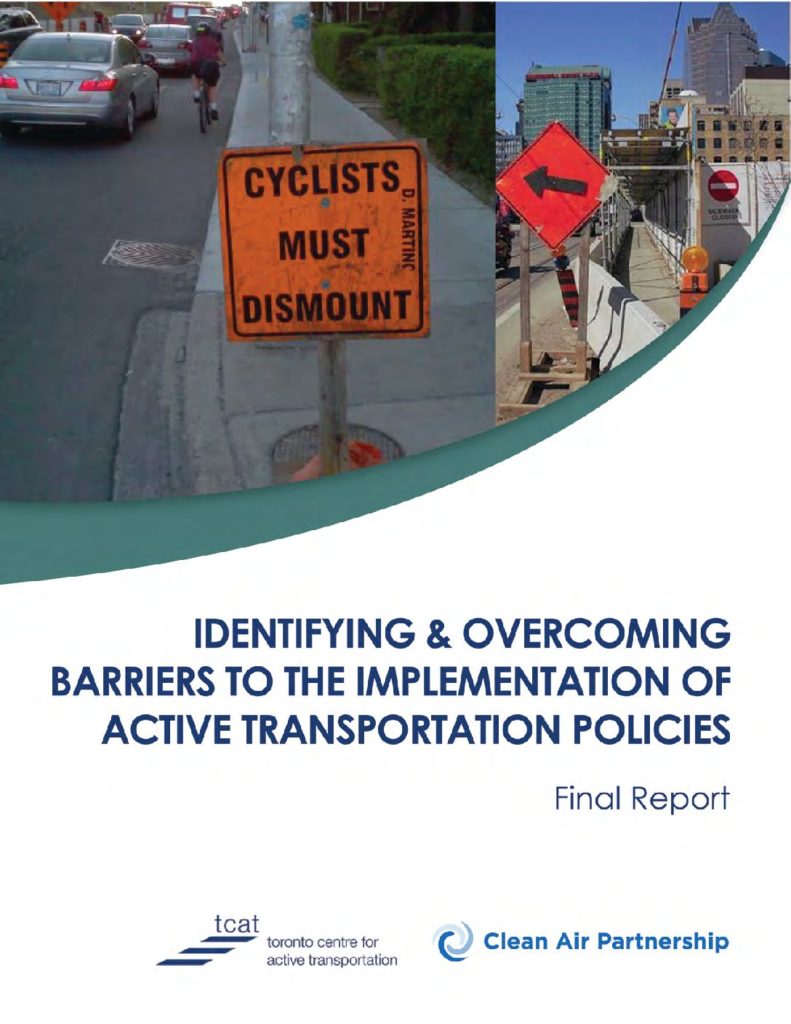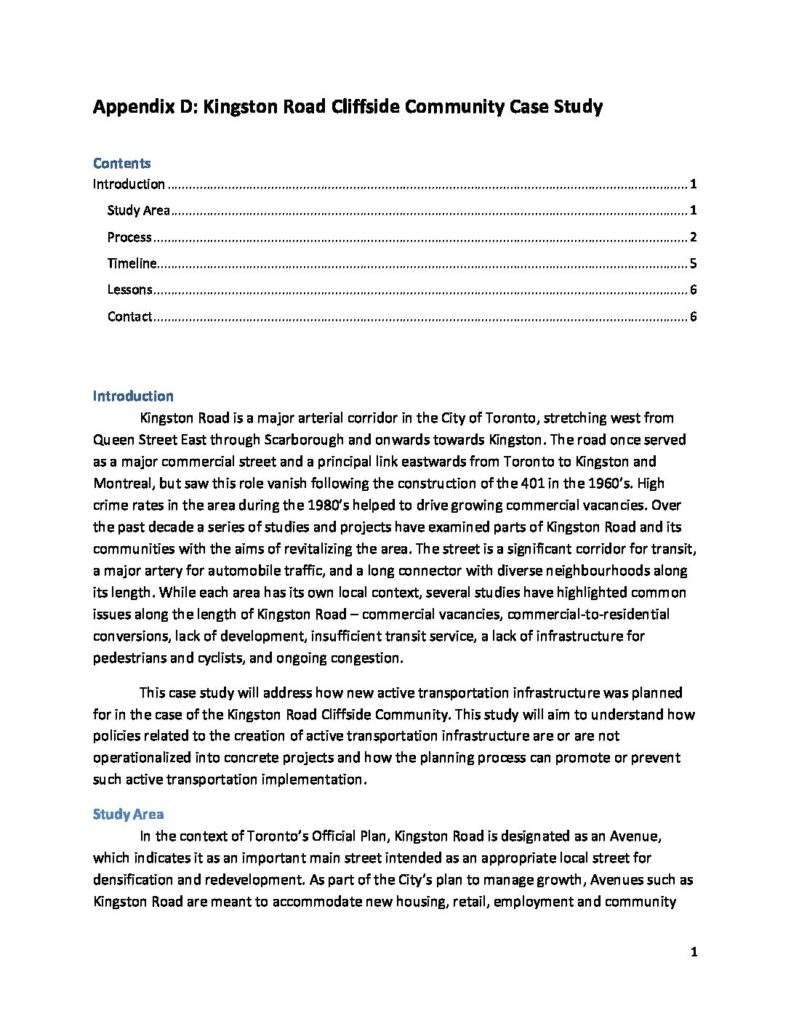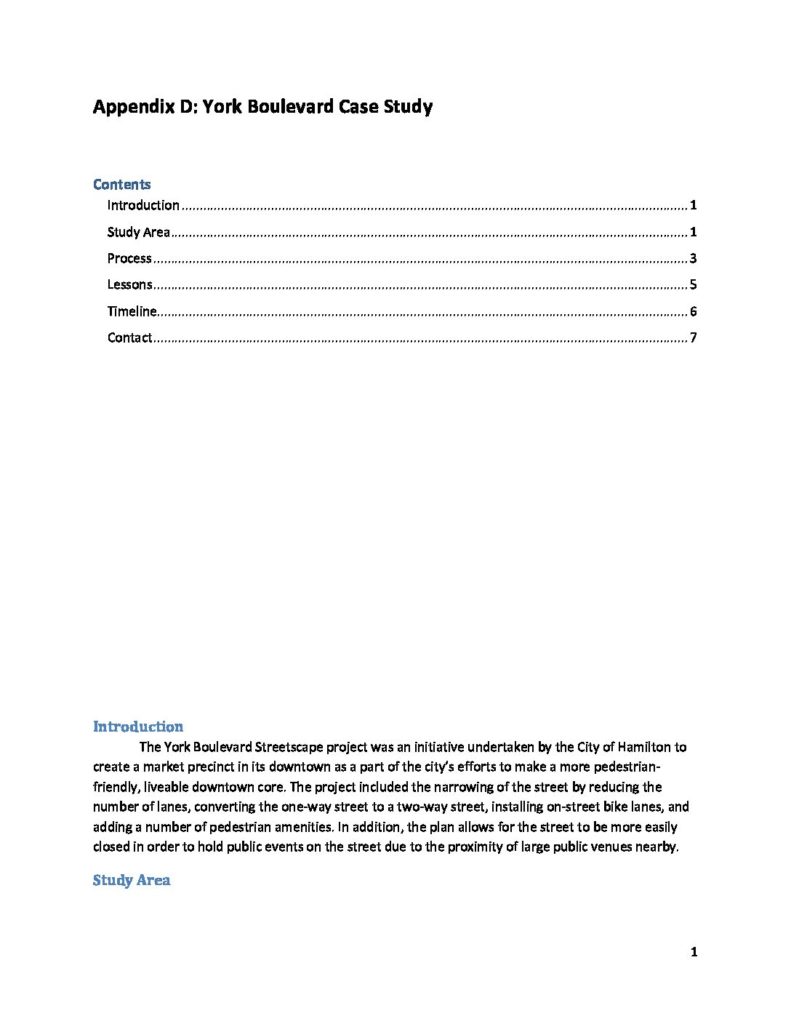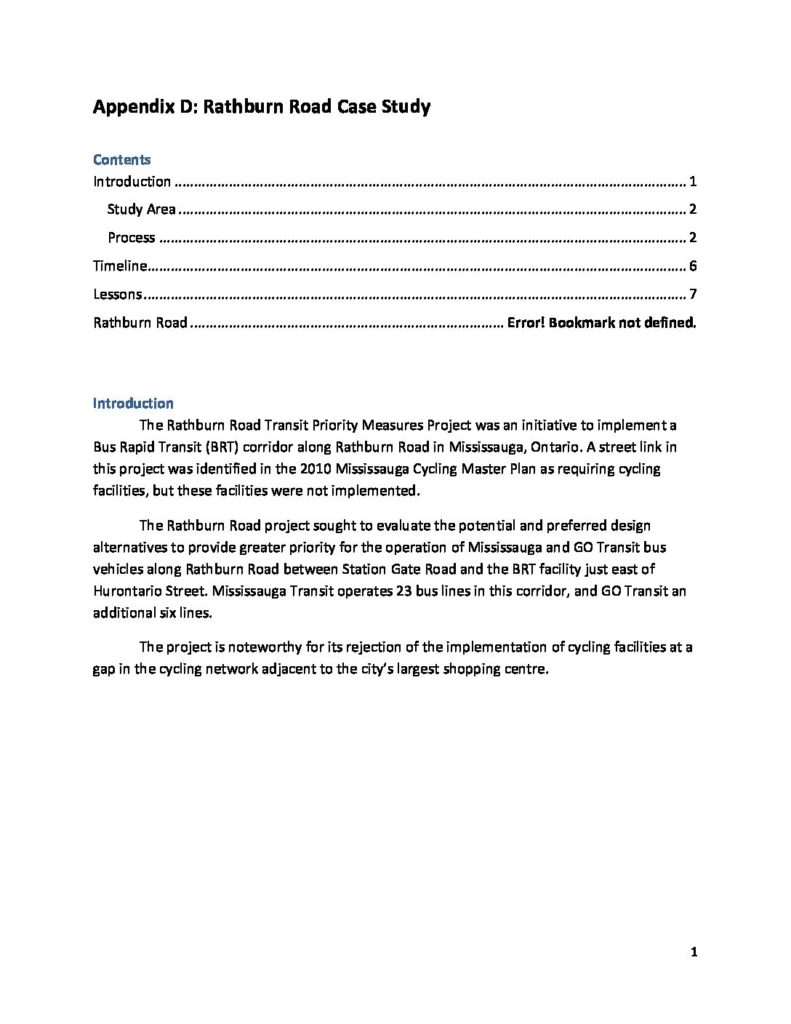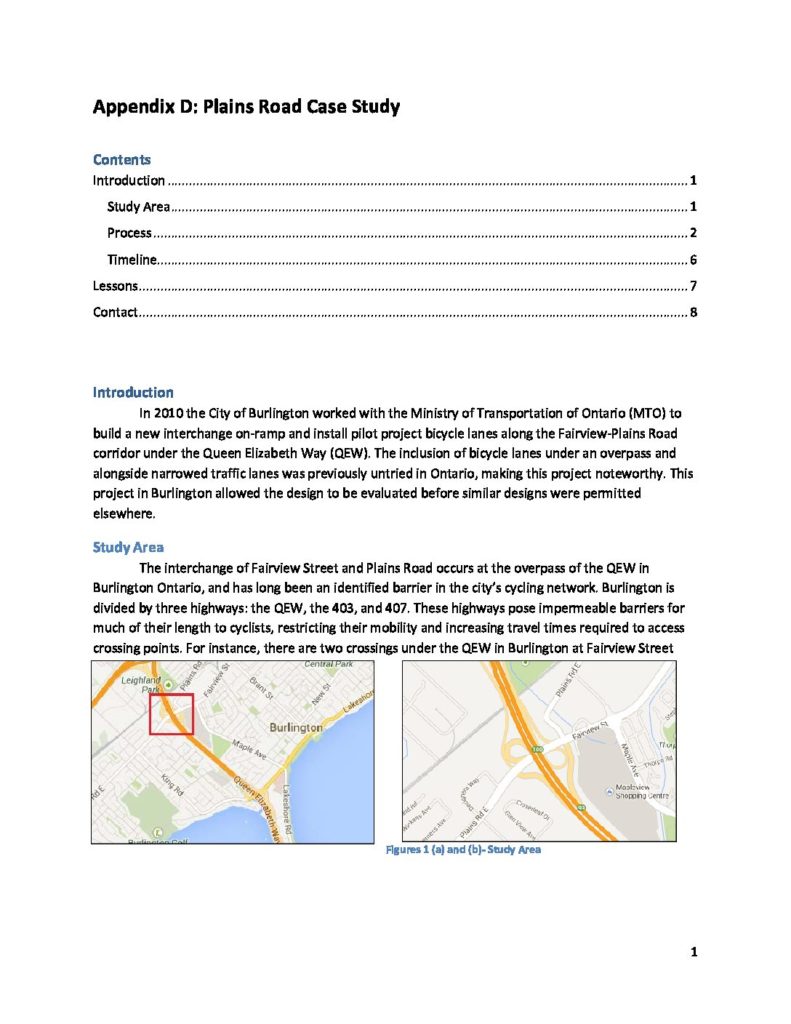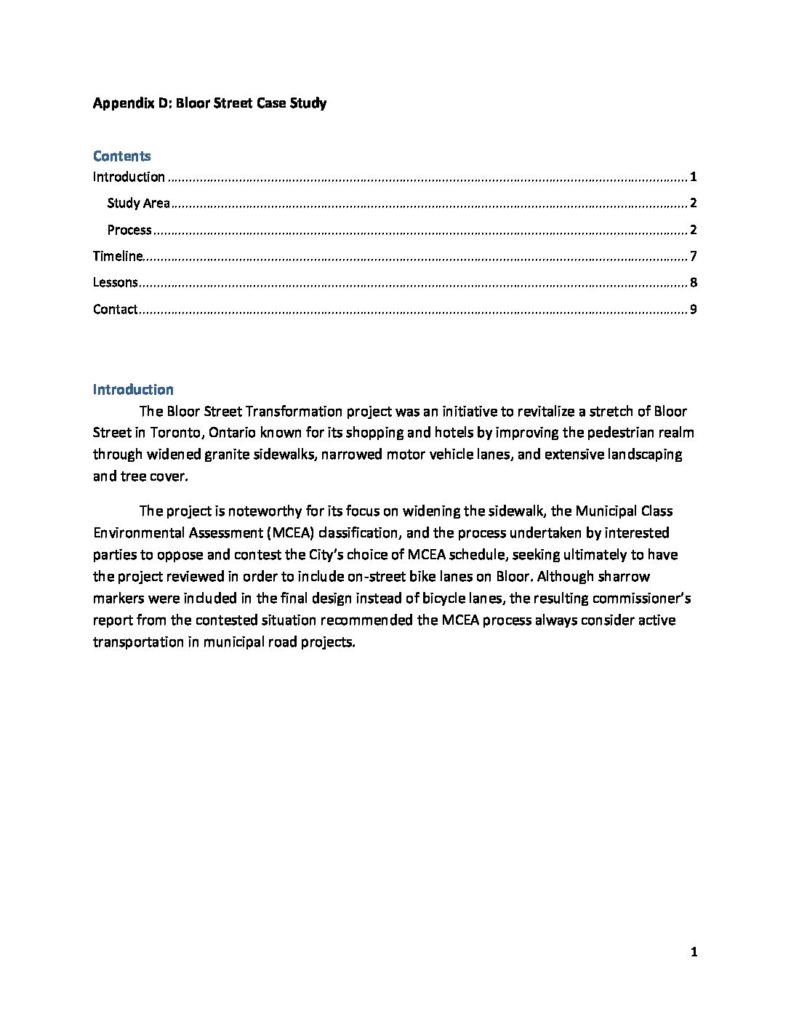This research paper investigates the implementation of Ontario’s provincial and municipal policies that seek to build communities that encourage walking and cycling. Although policies have recently come a long way in recognizing and promoting active transportation, aligning policy is different than aligning practice, and current policies are not necessarily translating into successful on-the-ground implementation. The paper explores the institutional barriers that exist in detailed planning, development, engineering, and construction process that have not caught up with higher-level policies including engineering standards and other institutionalized practices.
In order to better understand how provincial policies are or are not translating into current practices, between 2013 and 2014 the research team: (1) conducted a review of provincial policy, municipal policy, and professional street design guidelines such as those produced by the Transportation Association of Canada (TAC); (2) conducted two focus group sessions (one in York and the other in Burlington) with planning and engineering professionals; (3) and carried out several case studies of Toronto area road projects that either incorporated, or failed to incorporate, active transportation facilities.
Overall, the research found that despite high level policies that encourage active transportation, institutionalized barriers continue to exist that promote roadway design primarily oriented toward accommodating motor vehicles.
This is the final report submitted to Metrolinx on July 7, 2014.

